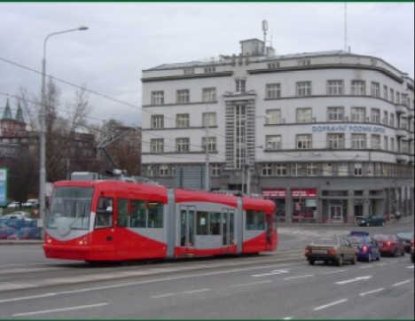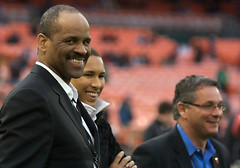A World Class City Sets Priorities... and funds priorities first
(Victor McFarlane, a very successful and committed to urban areas financier-developer, owns DC United. Flickr photo by UnitedMania.)
I love Councilmember Mary Cheh's quote about DC's being an ATM for sporting authorities. But the ATM and checkbook is wide open for other organizations and developers too. Many development deals come with special legislation authorizing significant tax breaks or sweeteners and incentives to fund parking structures and the like.
The Montgomery County Extra section of the Post has an article, "Nonprofit Groups Envision Barn As History Center: Fundraising Goal Is $3.2 Million," about activists getting the County to declare the project a Capital Improvement priority. From the article:
Their goal is to forge a sophisticated future for the 7,400 square feet of rustic architecture that has placed the red barn on a list of 20 sites designated by county planners as priority projects for possible development. ...
The Planning Board will meet again to consider final approval of the feasibility study after the project's supporters satisfy four conditions recommended by county planners.
The conditions include: a market study to determine the site's viability as a place for a heritage center; a shift in programming that would focus more on attracting business from residents, and reduce the building's role as a visitors' bureau for tourists; and a business plan detailing how the center can achieve long-term financial self-sufficiency at a time when planners say there isn't money for such a project.
A fourth condition calls for the Montgomery County Historical Society to renegotiate a lease with the Maryland-National Capital Park and Planning Commission under which it rents the Waters House.
---------------
1. Set priorities.
2. Fund priorities first.
3. Set conditions that matter.
4. Require objective feasibility analysis (and frankly the City should conduct/contract truly independent economic analysis, comparable to that of the Independent Budget Office in NYC).
When City Council does deals like this, it's too often from the standpoint of an open checkbook, with the requirements set by the developer-supplicant, rather than the city believing it can negotiate from a position of strength, and without necessarily determining whether or not what matters to the developer matters to the city.
Right now, I would argue that the city's #1 priority, first and foremost, and always, is enhancing the transit infrastructure.
$150 million could build a lot of streetcar trackage and purchase a fair number of streetcar vehicles.
Likely this would over time have a 1000% return on investment.
Frittering away money on a soccer stadium should not be considered a foremost priority.
Development in Anacostia is hardly dependent on a sports stadium.
DC streetcar ready for service, in Europe... (DC Office of Planning photo.)
It turns out the prolific Marc Fisher, Post columnist, writes about the soccer stadium proposal today as well, in "A Stadium Plan That Won't Pay Off." From the article:
... the District is failing to understand a very simple set of numbers. Here they are: 220, 100, 35, 8. The downtown arena Pollin built with his own $220 million (the District kicked in for infrastructure around the site) hosts roughly 220 events a year, including Wizards and Mystics basketball, Capitals hockey, the circus, concerts and conferences. (Billboard magazine ranked Pollin's arena ninth on the planet in profits.)
700 block of 7th Street NW on a rainy day.
The baseball stadium, paid for by D.C. government bonds based on tax receipts from fans and businesses, will host 81 Nats games, plus a smattering of concerts and other sports and special events such as a papal visit, for a total of about 100 dates.
A Major League Soccer stadium, using other teams' facilities as a guide, might be used 35 times a year. That's better than the eight or so times an NFL stadium sees action each year, but it is nowhere near the intensity of use that can gin up crowds for an entertainment district.
And if a city doesn't get ancillary development out of investing in a sports facility, then it cannot justify pumping public dollars into a profit-making business. If Prince George's County has seen any economic benefit from playing host to the Redskins, please let the residents of Landover know, because all they've gotten is a world-class traffic nightmare.
Major League Soccer is in the midst of a nationwide campaign to win public money for its teams' stadiums. .... Victor MacFarlane, the investor who bought D.C. United last year, initially said he'd pay for a stadium himself, but that was contingent on his winning the right to build retail and housing around the stadium. He lost that competition, so now he wants the city to pay for the bulk of the stadium.
Labels: bad government, good government, government contracting, public finance, sports and economic development, sustainable land use and resource planning




0 Comments:
Post a Comment
<< Home